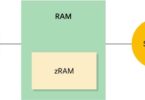The SyNAPSE Chip – Brain Inspired Computer Architecture
The SyNAPSE chip introduced in August 7, 2014, has the capabilities of transforming mobility by urging innovation around a completely new type of application together with sensory potentials at very low power levels which is enabled by a revolutionary new technology design that has been inspired by the human brain. The human brain is one of the most sophisticated computer which has the potential of learning various things with the help of little inputs wherein it can identify objects, comprehend speech as well as respond to changes and from early days of digital technology, scientist have been striving to build computers which would be more like the human brain. IBM is the one who has built a new chip with a brain inspired computer architecture that is powered by a unique one million neurons and 256 million synapses and is the largest chip ever built at 5.4 billion transistors having an on-chip network of 4,096 neurosynaptic cores. However it consumes 63mW at the time of real-time operation, compared to orders of magnitude energy which is less than traditional chips. This technology gives way to new computing frontiers for disseminated sensor as well as supercomputing applications as a part of complete cognitive hardware and software ecosystem.
`TrueNorth’ – Custom Made Brain Like Chip
Efforts to imitate the brain has been focussed on software with some researchers making attempts in creating neuro inspired computer chips that could process information in various ways from traditional hardware which includes a motivated project of IBM. A research paper which was released by Big Blue describes the details and has been published in the academic Journal Science on the so called TrueNorth, a custom made `brain-like’ chip,built on a simpler experimental system released by the company in 2011.TrueNorth besides being packed with 4,096 processor cores and 1 million neurons together with 256 million synapses has two of the fundamental biological building blocks making up the human brain which is called `spiking neurones’ by IBM. This indicates that the chip can convert data as patterns of pulses; similar to the one the way neuroscientists think the brain tends to store information.As per the company, IBM has tested the ability of the chip in driving common artificial intelligence tasks which include recognising images and its neurons and synapses could handle these tasks with normal speed with the use of less power than the tradition off the shelf chips. TrueNorth is capable of recognizing with 80% accuracy, things like people, cars, buses and trucks.
SyNAPSE Project
Besides this, when researches feed TrueNorth streaming video at 30 frames per second, it burns only 63mW of power processing the data in real time. IBM’s research on chip is a part of the SyNAPSE project – Systems of Neuromorphic Adaptive Plastic Scalable Electronics which is a huge effort from Darpa, the US Defense Departments’ research arm in creating a brain like hardware and the purpose of the project wherein an investment of about $53 million has been done since 2008 in IBM project alone, is to create hardware which could break the von Neumann paradigm that is the standard way of building computers. While in von Neumann computer, the handling and storage of data is divided between the central processing unit and the machine’s main memory and for its function, computers need to carry a set of instructions or programs serially by shuttling data from memory to the CPU due to which the memory and the CPU being separated, the data needs to be constantly relocated. This results in the creations of blockage and the need of lots of energy though there are means to resolve it by using multi-core chips which can run task in a similar manner or store things in cache which is a special kind of memory closer to the processor.
Neuromorphic Chips – Packs Memory/Communication/Computation in Small Modules
However, this only buys much speed up and not much power which means that the computers are not really working in real time, due to communication roadblock, according to Mead. Neuromorphic chips which have been developed by IBM together with the others, do not separate the data-storage and data-crunching parts of the computer. On the contrary, they pack the memory, communication and computation parts into small modules which tend to process information locally though they can communicate with each other quickly and with ease. According to IBM researchers, they resemble the circuits which are found in the brain, wherein the separation of computation together with the storage is the same and it is what adds energy efficiency which is the plus point of the chip. Eugenio Culurciello, professor at Purdue University working on neuromorphic systems for vision and helping in the development of NeuFlow platform in neural-net pioneer Yann LeCun’s lab at NYU states that `the good point about the architecture is its memory and computation are close and if it does not measure to state-of-art problems it could not be different from the current systems where memory and computation are actually separated.






